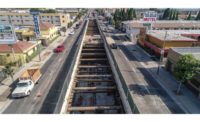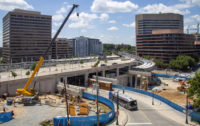The rail service, which will eventually connect the city’s downtown to the beach terminus of Santa Monica, has been controversial ever since it started construction.
Advocates have touted Expo as the future of Los Angeles, destined to change the very logistical fabric of the city and alleviate the transportation problems that have haunted it. Air will be cleaner and traffic will be lighter because the light rail line expansion will get people out of their cars, advocates argue.
Opponents, however, tag Expo a dangerous monolith of 250 trains per day speeding through residential neighborhoods, causing gridlock on cross-streets and endangering school zones.
The Neighbors for Smart Rail wants a subway extension of Metro’s Purple Line through Los Angeles’ central Wilshire Corridor.
The group’s other objections include increased crime around new transit stations, and Expo’s potential violation of the California Environmental Quality Act.
“The opposition thinks all projections should be based on the 2007 conditions, or those existing at the time the studies were prepared, but Expo won’t even be operating until 2016,” Thornton says, adding there is some irony in the fact that existing conditions might actually be less restrictive than future conditions.
The Center for Biological Diversity, Arizona, filed a “neutral” brief with the state superior court based on its fears that acceptance of baselines calculated on future conditions could lead to a result that encourages a less rigorous environmental review process.
In the past two years, the courts of appeal have published four decisions addressing the question of whether state environmental quality permits lead an agency to use a projected future conditions baseline to determine whether a project will have a significant impact on traffic noise and air quality. In the first two decisions, the courts said no; in the most recent ones, the courts said yes.



Post a comment to this article
Report Abusive Comment